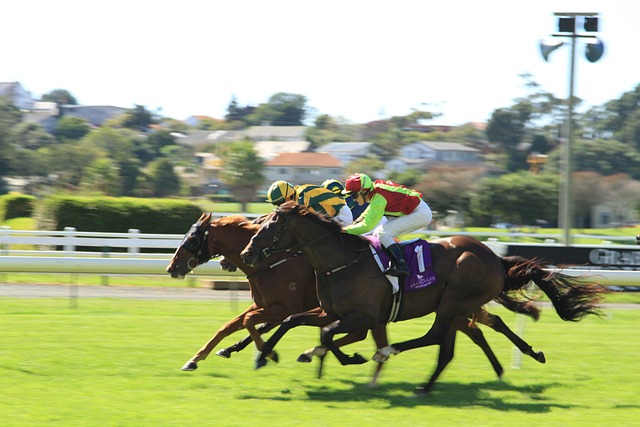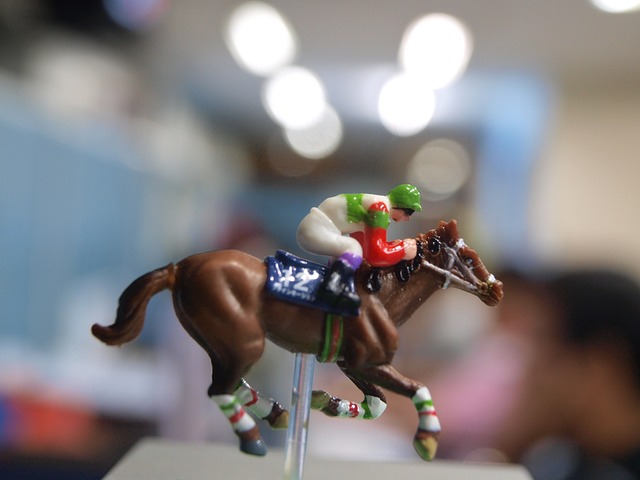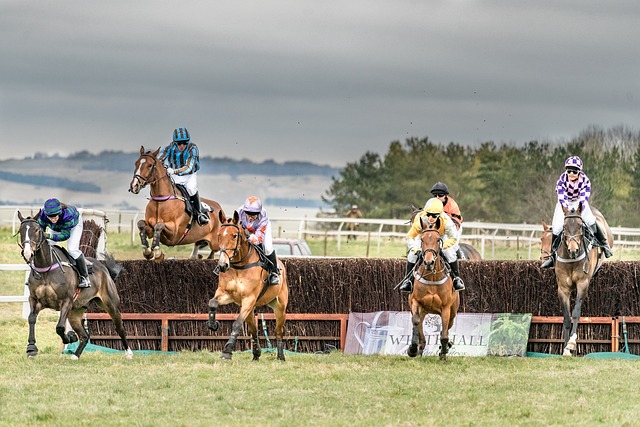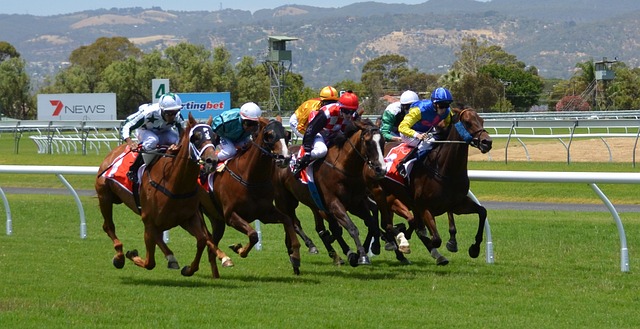 Looking back to the Aintree Grand National 2014.
Looking back to the Aintree Grand National 2014.
Pineau De Re, a French-bred son of Maresca Sorrento out of the unraced mare Elfe Du Perche. was born on the 8th May 2003. Bred by Michael Hardy, he went through Goffs France Summer Sale at the age of three and sold by vendor Ecuries Bayard and purchased by Seamus Murphy for 20,000 (Euros).
Previously, in the ownership of Mrs A. Vaughan until 20th December 2007, this bay gelding started his National Hunt racing career in the ownership of Barry Connell. He made his debut at Limerick, finishing second in a National Hunt Flat Race, trained by Philip Fenton ridden by his owner Mr B. Connell.
He would taste victory in the following season with an impressive ‘unchallenged’ victory at Fairyhouse in a 2m National Hunt Flat Race at odds of 8/1. He would head to Cheltenham finishing 7th at odds of 66/1.
Pineau De Re would win 5 races with Philip Fenton before changing stables on the 24th June 2013, at the age of 10.
At this point he was in the ownership of J. A. Provan. This must have come from a private sale as Mr Barry Connell had sent Pineau De Re to the Doncaster Horse In Training Sale on the 14th May 2013 but he was withdrawn.
From that day until retirement at the age of 13 (30th April 2016) he would remain in this ownership and trained Dr Richard Newland at Urloxhey Stables, Droitwich, Worcestershire.
You have to imagine Pineau De Re was purchased with the specific aim of competing in the Aintree Grand National. Certainly, the draw of exceptional prize money is enough to attract plenty with lofty hopes.
Take a look at his 8 career victories and spot the anomaly:
23rd Feb 2008 – Fairyhouse 7,946.50 (Euro)
17th Nov 2010 – Limerick 5,175 (Euro)
20th Oct 2011 – Thurles 10,350 (Euro)
3rd Jan 2013 – Thurles 5,520 (Euro)
3rd April 2013 – Downpatrick 16,250 (Euro)
14th Jan 2014 – Exeter £11,573.60
5th April 2014 – Aintree £561,300
13th Dec 2015 – Carlisle £12,021.30
In fact, in Pineau De Re’s total earnings were £677,271.
Let’s take a look at the Aintree Grand National 2014, which took place on the 5th April (4:15pm).
The 167th Grand National sponsored by Crabbie’s (Alcoholic Ginger Beer). 40 runners took their chance on going described as ‘good to soft’. The betting detailed an open race with Teaforthree and Double Seven 10JF (Joint Favourites). A false start delayed the race. While Battle Group (40/1) in the ownership of The Jolly Boys Outing, refused to race.
18 horses finished. All horse returned safely to their stables.
Pineau De Re was priced 25/1. He was ridden by Leighton Aspell (who would go on to win the following year with Many Clouds, trained Oliver Sherwood in the familiar silks of Trevor Hemmings).
The gelding was given a quiet ride settled in mid-division, led 2 out, drew clear run in to win by 5 lengths from Balthazar King (Philip Hobbs) (14/1), while Double Seven (Martin Brassil) finished a respectable third.
Pineau De Re carried a weight of 10-06. In a very classy field with multiple Grade 1 winners, Tidal Bay, Long Run shouldered much higher weights (11-10 and 11-09). Long Run won the Cheltenham Gold Cup (2011), while Tidal Bay had won the Arkle Challenge Trophy (2008). Neither horse finished the race with Long Run falling at Valetines (9) and Tidal Bay unseating his rider at the Canal Turn (8).
Pineau De Re ran out a good win at the age of eleven.
Dr Richard Newland said: ‘Two or three out we were getting excited. Aspell had a plan and delivered it superbly well. He’s a classy, classy horse, I’ve always thought that. He has a combination of stamina and a touch of speed and it was just a wonderful performance even though he made a few errors.’
The race was run in a time of 9m 9.9s.
Pineau De Re returned to defend his title in 2015. The 25/1 shot, ridden by Daryl Jacobs was prominent 3 out but tired in the closing stages to finished 12th beaten 57 ¾ lengths. Leighton Aspell made a winning decision by riding Many Clouds (25/1), trained by Oliver Sherwood in the ownership of Trevor Hemmings.
It would be the last Aintree Grand National for Pineau De Re. He would race just eight more times (victorious at Carlisle).
His final race came on the 30th April 2016. The 13 year old was priced 10/1 in a 3m Handicap Chase at Uttoxeter. He was pulled up before the 15th fence. Jockey Nico de Boinville said: ‘The gelding was never travelling.’
Racing Post Analysis (Richard Lowther) said: ‘The 2014 Grand National hero now enters honourable retirement.’
Pineau De Re was a remarkable horse because he was predominately raced over hurdles but a classy chaser on his day.
 The jockey who holds the record for rides in the Grand National is Richard Johnson with 21. Johnson first rode in the celebrated steeplechase in 1997, parting company with his mount, Celtic Abbey, at The Chair during the infamous ‘Monday National’, postponed for 48 hours after a bomb threat forced the evacuation of Aintree Racecourse. Indeed, Johnson failed to complete the National Course on his first five attempts, but on his sixth, in 2002, came as close as he ever would to winning the race.
The jockey who holds the record for rides in the Grand National is Richard Johnson with 21. Johnson first rode in the celebrated steeplechase in 1997, parting company with his mount, Celtic Abbey, at The Chair during the infamous ‘Monday National’, postponed for 48 hours after a bomb threat forced the evacuation of Aintree Racecourse. Indeed, Johnson failed to complete the National Course on his first five attempts, but on his sixth, in 2002, came as close as he ever would to winning the race. For most punters the dream is to bet on a winning outsider and pocket a lot of cash. When you consider since 1839 there have been just a handful of winners at 100/1 you may be pushing your luck for something more. However, never say never because one day you may be surprised.
For most punters the dream is to bet on a winning outsider and pocket a lot of cash. When you consider since 1839 there have been just a handful of winners at 100/1 you may be pushing your luck for something more. However, never say never because one day you may be surprised. The pinnacle of racing at the Cheltenham Festival saw a fascinating renewal of the Gold Cup. Inothewayurthinkin, trained by Gavin Cromwell, ridden by Mark Walsh, and owned by the richest man from Limerick, J.P. McManus, proved a worthy winner. The seven-year-old gelding left Galopin Des Champs in his wake, returning at odds of 15/2. The Willie Mullins-trained horse and hope for three consecutive wins was dismissed.
The pinnacle of racing at the Cheltenham Festival saw a fascinating renewal of the Gold Cup. Inothewayurthinkin, trained by Gavin Cromwell, ridden by Mark Walsh, and owned by the richest man from Limerick, J.P. McManus, proved a worthy winner. The seven-year-old gelding left Galopin Des Champs in his wake, returning at odds of 15/2. The Willie Mullins-trained horse and hope for three consecutive wins was dismissed. Looking back to the Aintree Grand National 2014.
Looking back to the Aintree Grand National 2014.